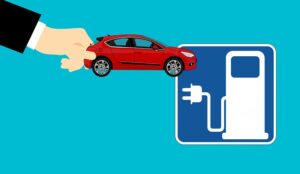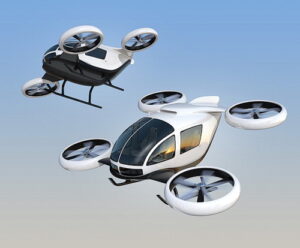
Driving is no longer just about hitting the open road and enjoying the journey. Today, technology is revolutionizing the automotive industry and transforming the way we drive. From self-driving cars to connected features, the automotive world is becoming increasingly tech-driven. This comprehensive guide explores the latest developments in automotive technology and provides an insight into the exciting innovations that are revolutionizing the way we drive. From autonomous cars to improved safety features, this guide looks at the cutting-edge technologies that are transforming the auto industry and making our roads safer and more efficient.
Brief History of Automotive Technology

The automotive industry has come a long way since its humble beginnings and contrary to popular opinon, Henry Ford did not invent the first automobile. His fame was in mass production.
It was when German engineer Carl Benz who patented the first gasoline automobile in 1886. A few decades later, in 1901, Benz produced the first mass-produced car, the Mercedes Benz Model 1901, and was awarded the first car patent in 1902.
In 1893, Charles Duryea and J. Frank designed the first gasoline powered vehicle in America.
Early 20th century automobiles were largely two-seater vehicles. These engines were usually fueled by gasoline and required the driver to manually get the car moving. Steering was done by hand, and cars were only able to drive around 20 miles per hour on average. However, with the advent of the automobile came a variety of new innovations such as traffic lights, parking meters, and road signage.
Since then, automotive technology has come a long way, and today’s cars represent a vast improvement beyond what anyone had expected.
Improved Safety Features

Safety features have been a large part of the automotive industry since automobiles were first invented. In our pervious article, we disussed saftey features that are currently installed in many of today’s vehilces. While car safety has come a long way over the years, there are still many new innovations in this field that are revolutionizing the automotive industry.
From autonomous braking systems to improved safety technologies, today’s cars are safer than ever. There are several new features coming to cars in the next few years, including systems that can detect pedestrians, crash prediction technology, and 360-degree surround view cameras.
Below is a list of the latest technologies coming soon:
-
- Night Vision: These are cameras that help enhance your visibility at night beyond what standard headlights can do. They detect thermal heat signatures that you would otherwise not see or notice. This technology is not mainstream yet, but you may find them on some of the luxury vehicles.
- Lane-Keeping Assist/ Lane Departure Warning: A very helpful technology. Lane departure warning alerts you if your car drifts into another lane, and lane-keeping assist actually will gently nudge the car back towards your lane.
- Blind-Spot Warning: Even more helpful, the blind-spot warning will alert you if you are going to move into a lane where there is a vehicle already there.
- 360-Degree Or Overhead Vision: – Some manufactures are installing overhead cameras; that is, cameras on the roof of the car which can give you a bird’s eye view of your sorroundings.
- Intersection-Scanning AEB: Autonomous Emergency Braking (AEB) systems will apply the vehicle’s brakes if it notices a danger ahead and the driver has not responded. You may have seen this technology in numerous commercials from car manufacturers that offer it.
- Adaptive Cruise Control: You set your car on cruise control. This system goes one step further. It will ensure that while you are in cruise control, the car will stay a safe distance from the cars ahead of you.
Autonomous Cars
While some may find it a bit scary, autonomous cars, or self-driving cars are on the move. So far, only Tesla has this feature, but this latest innovation will be catching on. Driverless vehicles are designed to perform all the usual functions of driving without any human input. From accelerating and braking to steering and parking.
Autonomous cars use a variety of sensors and GPS technology to navigate their surroundings without the need for a driver. It is expected that this will be the future of the automotive industry.
Connected Features
Connected features are technological advancements that enable communication between vehicles, cars, and the road infrastructure. These features allow vehicles to share information with each other and the road ahead, providing drivers with real-time traffic updates, as well as weather and hazard information. Connected features can also allow cars to send data to the road infrastructure, such as traffic lights, helping to improve road safety.
Additionally, they can enable car-to-home communication, allowing for the remote automation of smart home devices. This technology can be accessed via a smartphone app, and many cars come with the ability to connect to your smartphone. Upcoming are vehicle-to-vehicle communication (V2V), car-to-infrastructure communication (C2I), and vehicle-to-home communication (V2H). But don’t expect your dealer to show you how it works as this is not mainstream yet. We’ll just have to wait a few more years.
Advanced Fuel Systems
One automotive innovation set to be rolled out in the next few years is the use of advanced fuel systems. While gasoline has traditionally been the primary source of fuel for cars, new fuel systems are now being introduced to the automotive industry.
Hydrogen fuel, for example, is a renewable energy source that is currently being used in cars by Honda. Other types of alternative fuel in cars include natural gas, which is expected to be 50% cheaper than today’s gas, and biofuels, which come from natural ingredients such as plants. These advancements are expected to reduce pollution and be cheaper than gasoline.
Electric Vehicles

Already on the market, electric vehicles, also referred to as EVs, are another innovation that is revolutionizing the automotive industry. EVs are powered by electricity and do not contain any emissions.
These advancements are reducing emissions and improving air quality in cities. Although these cars are on the road now, we are still at the fetal stages of this technology, and in another few years, advancements in EV tech will be electrifying (pun intented).
Right now, the average distance one can go in an EV is about 230 miles without recharging the battery, but this improvement is expected to have battery ranges up to 1000 miles possibly by 2025. Other advances such as faster charging stations are already under research and the new infrastructure bill will offer thousands of additional charging portals around the country.
Augmented Reality in Cars
Augmented reality is set to be introduced into cars in the near future, bringing a new and exciting element to driving. This technology superimposes computer-generated images onto real-world environments.
Cars that include augmented reality are expected to be released by the end of the year. Car manufacturers such as Honda and Toyota have already started producing AR-enabled cars.
AR-enabled cars are expected to include features such as navigation, vehicle servicing reminders, and car maintenance guides. Furthermore, cars that include augmented reality features are expected to be more efficient and safer to drive.
Future of Automotive Technology

The automotive industry is predicted to continue to evolve and develop in the years to come. While autonomous cars and electric vehicles are currently the major breakthrough in car technology, there are a variety of other automotive innovations that are set to be released in the near future.
Driverless taxis and mobility pods, for example, are set to become a common sight on the road in the future. Driverless technology is also expected to be integrated into other modes of transportation, such as airplanes and ferries.
Later on, quite possibly in this decade, flying cars may be a reality and not just a fantasy concept that you would see on the Jetsons.